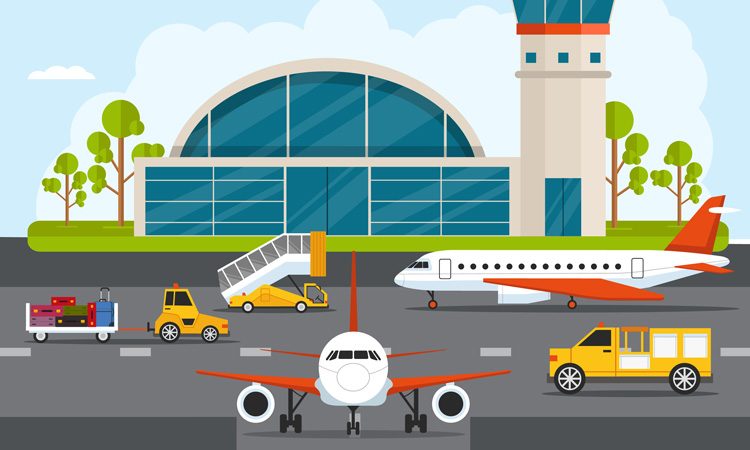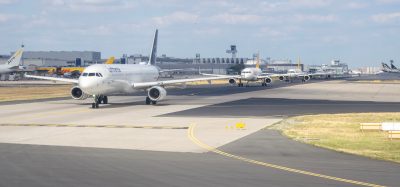California Air Resources Board pledges to clean up airport shuttles
- Like
- Digg
- Del
- Tumblr
- VKontakte
- Buffer
- Love This
- Odnoklassniki
- Meneame
- Blogger
- Amazon
- Yahoo Mail
- Gmail
- AOL
- Newsvine
- HackerNews
- Evernote
- MySpace
- Mail.ru
- Viadeo
- Line
- Comments
- Yummly
- SMS
- Viber
- Telegram
- Subscribe
- Skype
- Facebook Messenger
- Kakao
- LiveJournal
- Yammer
- Edgar
- Fintel
- Mix
- Instapaper
- Copy Link
Posted: 2 July 2019 | International Airport Review | No comments yet
New rule approved by CARB requires a gradual transition to zero-emission technology at airports by 2035, in a bid to reduce climate pollution by half a million tonnes.


The California Air Resources Board (CARB) has approved a rule that will require fixed route airport shuttles serving the state’s 13 largest airports to transition to 100 per cent zero-emission vehicles by 2035.
The regulation applies to public and private fleets, including parking facilities, rental car agencies and hotels.
With almost 1,000 airport shuttles in operation, the regulation is expected to reduce greenhouse gas emissions by at least 500,000 metric tonnes, with a beneficial economic impact for shuttle-fleet owners of an estimated $30 million in reduced fuel and maintenance costs.
CARB Executive Officer, Richard Corey, said: “California continues its forward march toward a zero-emission future with airport shuttles presenting a great opportunity for showcasing this process. Shuttles are a vital part of airport activity. The transition to zero-emission shuttles not only provides consumers with clean, quiet transport but will help further expand the reach of this ultra-clean technology into the heavy-duty transportation sector.”
Airport shuttles are particularly well-suited to zero-emission technology because they operate up to 200 miles per day on short, fixed routes with low average speeds in a stop-and-go pattern. Zero-emission vehicles (ZEVs) have an advantage over internal combustion vehicles in terms of energy and fuel efficiency, as well as maintenance costs, when operating in this way. The shuttles are also centrally maintained and fuelled, which presents opportunities for overnight and mid-day charging. As the technology evolves, costs and performance will continue to improve, making adoption easier.
Zero-emission shuttles are already operating throughout California. Six airports as well as private businesses serving nine airports have purchased ZEV airport shuttles. In addition to 48 ZEVs currently operating, nearly 100 additional zero-emission shuttles have been ordered, many of which have been awarded incentive funding through the state. Combined, on-order and currently operating ZEV shuttles represent more than 15 per cent of all airport shuttles in California, but increased adoption of these technologies is needed to meet air quality and climate goals.
Elsewhere in the country, major airports in New York City, New Jersey, Atlanta, Kansas City, Indianapolis, and Raleigh, North Carolina are deploying zero-emission shuttles. These projects also demonstrate the technological and market readiness of ZEVs for airport operations.
The rule will be phased in over a 13-year period. Beginning in 2022, shuttle fleets will be required to report the details of their vehicles. Starting in 2023, if fleets are replacing a ZEV shuttle, the replacement vehicle must also be a ZEV.
The rule starts with annual reporting to CARB in 2022, and will end in 2035 with a fully compliant, 100 per cent ZEV airport shuttle fleet.
The schedule is designed to allow fleets to remain eligible for incentive funding during most of the transition period, and to use their current shuttles for the remainder of their useful life. It also provides adequate time for infrastructure planning and installation.
CARB staff will work with airport-shuttle operators and stakeholders of other CARB zero-emission regulations to facilitate sharing of technology and implementation strategies.
CARB’s economic analysis of the rule shows that zero-emission shuttles, like most new technologies, may have a higher upfront cost, but they have lower operating costs than their internal combustion counterparts which are expected to be offset within the first eight years of operation and potentially shorter if owners take advantage of incentive opportunities. The regulation is expected to yield cost savings of $30 million to airport-shuttle operators from 2020 to 2040 due to reduced fuel and maintenance costs, including the use of low-carbon fuel standard credits for electricity.
The regulation will improve air quality throughout the state, including low-income and disadvantaged communities, especially those close to major airports.
CARB is also developing a proposal that would achieve additional emission reductions by requiring zero-emission airport ground equipment.
Related topics
Airside operations, Emissions, Sustainability, Sustainable Aviation Fuel (SAF), Sustainable development

















